BMWED Member Gets Great Deal with the Union Plus Auto Buying Service
If you’ve traversed a railroad bridge or tunnel in Nevada or Wyoming, Rex Cutler could probably name it. The lifetime Brotherhood of Maintenance of Way Employees (BMWED) Local 1227 member did the heavy lifting on the cornerstones of rail infrastructure in both states. Now in retirement and thanks to Union Plus, he’s fully prepared to hit the open road along with his wife, Dawn.
Rex and Dawn are proud owners of a 40-foot trailer that’s meant to fulfill their wanderlust. However, they felt like there was one hitch in their plan – they needed more horsepower underneath the hood than their previous vehicle could muster.
“With that trailer, we intend to camp a lot more. We made up our minds that to do it right, we needed a more powerful vehicle,” said Dawn Cutler, the family’s chief car buying officer.
Doing it right meant the Ogden, Utah, couple sought a perfect deal on a full-bed diesel truck, hopefully in maroon. Rex and Dawn began the process by visiting the same dealership where they had purchased every car since 1989.
“We went in and tried to negotiate a good price based in our loyalty to the dealership,” said Cutler. “Unfortunately, there just wasn’t a deal there. We walked out. I told Rex that I’d search online and that’s when I remembered the Union Plus Auto Buying Service.”
Dawn confirmed they were eligible for the Union Plus Auto Buying Service, which saves BMWED members an average of more than $3,106 off MSRP on new vehicles. For used vehicle purchases, Union Plus offers up to $1,000 in discounts and often can provide free CarFax reports throughout the buying process. Additionally, the Cutlers were eligible for a $100 rebate since they were purchasing a new, union-made vehicle*.
“Originally, when we signed up for the service, I didn’t even know we were eligible for the rebate,” said Cutler. “It had all gone so smoothly. Suddenly we had a variety of competing prices to choose from. We got a great deal. Then lo and behold, a little while later, a check arrived. We were shocked. It’s such an excellent service.”
The Cutlers put their new ride right to work, pulling their trailer to the Idaho wilderness, and exploring the scenic wonders of southern Utah. They’ve found that having a huskier engine and more capacity enables them to travel with ease.
The Union Plus Auto Buying Service is available in the United States for active and retired union members, and their families. This program connects Union Plus buyers with certified dealers who offer upfront, online pricing, and Guaranteed Savings. It also provides insight into what others paid for the same car so you have the confidence that you’re getting a great deal.
*Between 7/1/16 and 9/30/16, the average estimated savings off MSRP presented by TrueCar Certified Dealers to users of TrueCar powered websites, based on users who configured virtual vehicles and who TrueCar identified as purchasing a new vehicle of the same make and model listed on the certificate from a Certified Dealer as of 10/31/2016, was $3,106. Your actual savings may vary based on multiple factors including the vehicle you select, region, dealer, and applicable vehicle specific manufacturer incentives which are subject to change. The Manufacturer's Suggested Retail Price ("MSRP") is determined by the manufacturer, and may not reflect the price at which vehicles are generally sold in the dealer's trade area as not all vehicles are sold at MSRP. Each dealer sets its own pricing. Your actual purchase price is negotiated between you and the dealer. TrueCar does not sell or lease motor vehicles.
TrueCar operates this information website ("Service") featuring pricing, performance, technical, and safety data available for new and used vehicles. The Service is not available in all locations.
**Guaranteed Savings not available in all states. In these states, a Target Price is shown, which is a market-based example of what you can reasonably expect to pay for your vehicle as configured. Your configured vehicle may not be available or in-stock at the Certified Dealer.
TrueCar does not broker, sell or lease motor vehicles. Each Certified Dealer sets its own pricing, and will confirm actual vehicle availability from in-stock inventory, including options and color choices.


Read how this Brotherhood of Maintenance of Way Employees (BMWED) member shifts from the railroad to the open road through the Union Plus Auto Buying Service.

Why Do Car Prices Change?
The Union Plus Auto Buying Service is committed to a faster, easier buying experience. One part of the process you may be wondering about is the tendency for car prices to change. The simple answer is supply and demand.
The base price or manufacturer suggested retail price (MSRP) of a particular car does not fluctuate much. But to meet or drive changes in demand, manufacturers often offer incentives such as cash back or bonus cash. Dealers have the same opportunities to offer incentives based on their stock, which often happens towards the end of the month.
For example, one dealership might project high sales of a popular model. A smaller dealership in a different city doesn’t, requesting fewer vehicles from the manufacturer. This second dealer might not offer incentives because they believe their smaller inventory will sell, while the first offers them to quickly move more vehicles.
While prices fluctuate, using a platform like the Union Plus Auto Buying Service, you can receive upfront pricing information from participating dealers that includes available dealer and manufacturer incentives. The Union Plus Auto Buying Service uses TrueCar Certified Dealers who will help you find the vehicle you want and locate incentives you may qualify for, including potential extra savings.

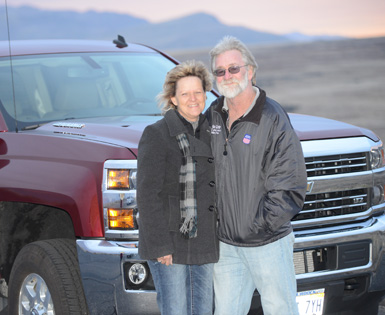
We want to empower consumers with the information they need to feel confident throughout the entire car-buying process. Knowing why car prices change will help you get a great deal.

Union Plus Helps USW Employee Get Great Deal on New Union-Made Vehicle
Lisa Nutter started in the purchasing and travel department at the United Steelworkers headquarters (USW) in Pittsburgh, PA six years ago. She made a career move from the corporate world because she wanted to experience the benefits that union membership offers. She loves that the union is always looking out for her and her fellow union members’ best interests. Another value that comes with union membership is the opportunity to take advantage of the Union Plus member benefits.
“I was at a local USW meeting and someone mentioned Union Plus to me,” Nutter, a USW Local 3657 member, said. “I started looking through their website. I saw discounts for theme parks and purchased tickets to Universal Studios in Florida. I then saw a page on the Union Plus Auto Buying Service, and the next thing you know I was buying a new union-made car.”
Nutter, who serves as the recording secretary in her local, used the Union Plus Auto Buying Service to purchase her new Ford Focus hatchback. Through the Union Plus website, it is easy to search for a new or used car you want within a radius of your house, and then see the dealer price for that car. Administered by TrueCar, the Union Plus Auto Buying program ensures that union members are getting the best price on the car they want.
“I found the whole program to be a very seamless process,” Nutter said.
“Union Plus gave me two dealerships to look at and one dealership contacted me right away. They had worked with Union Plus before, and I didn’t have to do any negotiating. This is the first brand new car I have ever owned; it only had four miles on it when I purchased it!” Nutter said.
The Union Plus Auto Buying Service helps union members and their families save an average of $3,279 off MSRP. It allows members to see what others paid for the same model car you want and lock in the price. Union members can also get a $100 rebate when you they buy a new union-made car and $200 on a new union-made, EPA Green car1.
“One of the coolest things about my new Focus is that it has a sticker on it saying that it was made in a union plant; that’s very cool to look at,” Nutter added.
“Union Plus is a great thing for union members. I like to know that the benefits of being in my local union extend beyond the local. It’s great being recognized on a grander scale for being a union member," Nutter said.
1Between 7/1/15 and 9/30/15, the average estimated savings off MSRP presented by TrueCar Certified Dealers to users of TrueCar powered websites, based on users who configured virtual vehicles and who TrueCar identified as purchasing a new vehicle of the same make and model listed on the certificate from a Certified Dealer as of 10/31/2015, was $3,279. Your actual savings may vary based on multiple factors including the vehicle you select, region, dealer, and applicable vehicle specific manufacturer incentives which are subject to change. The Manufacturer's Suggested Retail Price ("MSRP") is determined by the manufacturer, and may not reflect the price at which vehicles are generally sold in the dealer's trade area as not all vehicles are sold at MSRP. Each dealer sets its own pricing. Neither TrueCar nor Union Plus brokers,sells or leases motor vehicles.
TrueCar operates this information website ("Service") featuring pricing, performance, technical, and safety data available for new and used vehicles. The Service is not available in all locations.
**Guaranteed Savings not available in all states. In these states, a Target Price is shown, which is a market-based example of what you can reasonably expect to pay for your vehicle as configured. Your configured vehicle may not be available or in-stock at the Certified Dealer.
TrueCar does not broker, sell or lease motor vehicles. Each Certified Dealer sets its own pricing, and will confirm actual vehicle availability from in-stock inventory, including options and color choices.
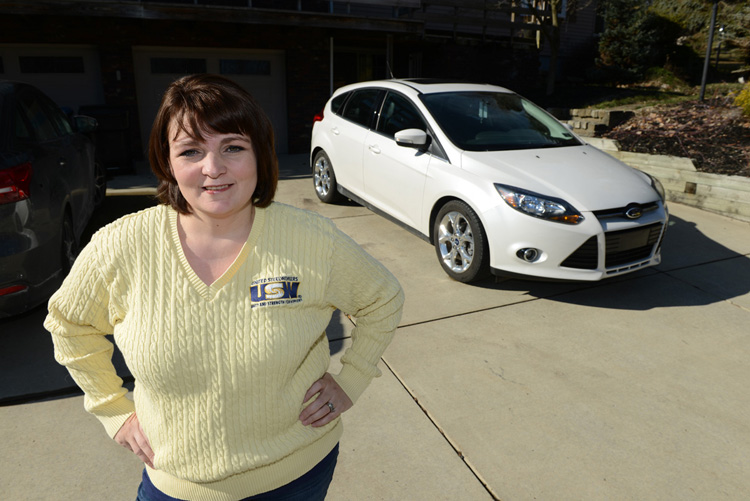
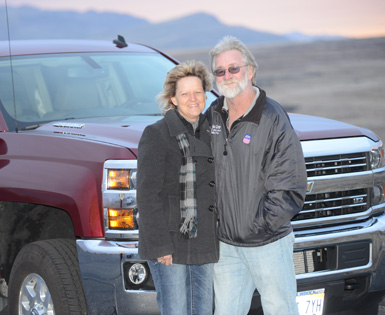
Read how this United Steelworkers (USW) International headquarters employee purchases her first new car thanks to the Union Plus Auto Buying Service.

How to Avoid Buying a Lemon Car
Finding a trouble-free used car has nothing to do with luck and everything to do with applying good research and investigative skills. Knowing how to spot potential problems and determining how reliable a used vehicle is can save you from expensive automotive headaches down the road. The following advice can help you determine whether a used vehicle is a good value or potential trouble.
13 Tricks to Try
- Check the Reliability Record
A good way to reduce the risk of purchasing a trouble-prone vehicle is to select models with a good reliability record before you begin shopping. Consumer Reports' annual subscriber survey provides exclusive real-world reliability information that can help you narrow your selections. See best and worst used cars for a quick-reference list of the best and worst used cars from our most recent survey. Also read the reliability-history charts that accompany most of Consumer Reports' vehicle profiles to get a more detailed view at how specific models have held up in 17 trouble areas as well as overall.
- Read the Window Sticker
The Federal Trade Commission requires dealers to post a Buyer's Guide in every used vehicle offered for sale. Usually attached to a window, it must contain certain information, including whether the vehicle is being sold "as is" or with a warranty, and what percentage of repair costs (if any) the dealer is obligated to pay. The Buyer's Guide information overrides any contrary provisions in your sales contract. In other words, if the Buyer's Guide says that the vehicle is covered by a warranty, the dealer must honor that warranty. If any changes in coverage are negotiated, the Buyer's Guide must be altered to reflect them before the sale.
If a sale is designated "as is," it means that the dealer makes no guarantees as to the condition of the vehicle, so any problems that arise after you have made the purchase will be your responsibility. Many states do not allow as-is sales on vehicles selling for more than a certain price.
- Check the Exterior
Begin by doing a walk around of the car, looking for dents, chipped paint, mismatched body panels or parts, broken lamp housings, and chipped windows. Gaps between body panels should be of a consistent width and line up.
A closer inspection can reveal paint overspray on chrome or rubber trim or in the vehicle's wheel wells. This is a telltale sign of body-panel repair.
Test for the presence of body filler with a small magnet. If the magnet doesn't stick to the panel, the car may have filler under the paint (some vehicles with plastic or fiberglass panels, however, won't attract a magnet at all). A door, hood, or trunk that doesn't close and seal properly is evidence of previous damage and/or sloppy repair work. A CAPA (Certified Automotive Parts Association) sticker on a body panel means the part has been replaced. Inconsistent welds around the hood, doors, or trunk also indicate repair.
- Check the Interior

A long look into the cabin can reveal many obvious problems, such as a sagging headliner, cracked dashboard, and missing knobs, handles, and buttons. Frayed seat belts or ones with melted fibers (because of friction) may be evidence of a previous frontal impact above 15 mph--damaged safety belts should always be replaced.
Prematurely worn pedals or a sagging driver's seat are signs that the vehicle has very high mileage. An air bag warning light that stays lit may indicate that a bag has deployed and been improperly replaced--or not replaced at all. A mildew smell, caused by a water leak, can be very hard to get rid of. Discolored carpeting, silt in the trunk, or intermittent electrical problems may be signs of flood damage.
- Check Under the Hood
At first glance, the engine, radiator, and battery should be relatively grease-free and have very little or no corrosion. Belts and hoses should be pliable and unworn. Look for wet spots, which can indicate leaking oil or fluids. Melted wires, tubes, or lines, or a blackened firewall may be signs of overheating or even an engine fire.
With the engine cool, insure that all fluids are clean, filled to the proper level, and do not have leaks. Check the engine oil while the engine is cool. Remove the dipstick from its tube and clean it with a dry rag, reinsert it and remove it again. The oil level should be between the "full" and "add" marks. Normal engine oil is brown or black, depending on when it was last changed. Gritty or gelatinous oil may indicate long stretches between oil changes. Thin, frothy oil that's the color of chocolate milk may point to a blown head gasket or to a severely damaged block or cylinder head. Fine metal particles in the oil indicate internal damage or heavy wear.
The transmission fluid dipstick is usually located in the rear of the engine compartment. Check it right after the car has been driven for more than 10 minutes. With the engine at idle and both the brake and parking brake applied, shift through all the gears. Leave the engine running and put it in neutral or park (according to the owner's manual) and check the level in relation to the dipstick marks. Also inspect the fluid's condition. The transmission fluid should be bright red to light reddish brown, not dark brown, black, or mustard colored; those colors can indicate serious problems. If it has a strong burned smell, that can indicate severe wear.
- Check the Tires
Wear should be even across the width of the tread and the same on the left and right sides of the car. Tires that are frequently used while over-inflated tend to have more wear in the middle; tires driven while under-inflated tend to wear more on the sides. Heavy wear on the outside shoulder near the sidewall of the tire indicates a car that has been driven hard. This can be a sign that other parts of the car may suffer from excessive wear due to aggressive driving. Cupped tires, those that have worn unevenly along the tread's circumference, can indicate various problems with the steering, suspension, or brakes.
- Check the Steering
With the car idling, turn the steering wheel right and left. Check that there isn't any slack or "play," or clunking noise in the steering. Excess play may indicate a worn steering gear or damaged linkage.
While driving at normal speeds on smooth, flat pavement, the car shouldn't wander or need constant steering corrections. A shaking steering wheel often indicates a need for a wheel balancing or front-end alignment, which are easily remedied. However, this may also be a clue that there's a problem with the driveline, suspension, or frame, which could mean expensive repairs are in order.
- Check the Suspension
Check the suspension by pushing down hard on each fender and letting go. The car should rebound softly, once or twice. More than two severe rebounds indicate worn shock absorbers or struts. Also, drive the car over a bumpy road at about 30 mph. A car that bounces and slams at moderate speeds over common pavement may have a worn or damaged suspension.
- Check the Tailpipe
A puff of white smoke upon start-up is probably the result of condensation and not a cause for alarm. Black smoke after the car has warmed up indicates an overly rich air-fuel mixture--usually due to a dirty air filter, a faulty oxygen sensor, or mass-air meter (which measures the amount of intake air). Blue smoke indicates oil burning—a bad sign, requiring expensive repairs. Billowing white smoke indicates water in the combustion chamber, usually because of a blown head gasket, damaged cylinder head, or even a cracked block--all expensive repairs.
- Step on the Gas
While driving, does the engine rev excessively before the car accelerates? This is a common sign of a misadjusted or worn-out clutch, or a damaged automatic transmission. A clutch adjustment is a relatively inexpensive service, but a damaged clutch or automatic-transmission repair can be extremely expensive.
Listen for knocks and pings while accelerating. These indicate bad ignition timing or an engine beginning to overheat.
- Check for Recalls and TSBs
Check to see if any recalls were issued and if recall service was performed. The National Highway Traffic Safety Administration (www.nhtsa.dot.gov; 800-424-9393) lists all official recalls. Ask the seller for documentation on recall service. If any recall work has not been performed on a car that you're considering, it should be done as soon as possible. Automakers are required to perform recall service free of charge, regardless of the vehicle's age or how long ago the recall was issued.
Technical Service Bulletins, or "TSBs," are reports a manufacturer sends its dealers about common or recurring problems with a specific model, and how to rectify them. Because TSBs aren't typically safety related, manufacturers are not obligated to notify owners or pay for the repairs, though an automaker may pay for some or all of the work—if an owner asks them to. See NHTSA's lists of TSBs. Check for any TSBs that were issued for the model you're buying and if the seller had any necessary repairs performed.
- Check the Vehicle's History
A vehicle-history report from CarFax or Experian Automotive can alert you to possible odometer fraud; reveal past fire, flood, and accident damage; or tell you if a rebuilt or salvage title has ever been issued for the vehicle. To access this information, provide the vehicle identification number, or "VIN," which is on the top of the dashboard, near the driver's side roof pillar. Reports should cost $15 and the process takes about five minutes.
- Visit a Mechanic
Before you buy a used vehicle, have it inspected by a qualified mechanic that routinely does automotive diagnostic work. A thorough diagnosis should cost around $120. An organization called the Car Care Council certifies diagnostic shops. If you're an AAA member, you could use one of the organization's recommended facilities.
In addition to doing the basic diagnostic, ask the mechanic to put the vehicle on a lift and inspect the undercarriage. Kinked structural components and large dents in the floor pan or fuel tank can indicate a past accident. Welding on the frame suggests a damaged section might have been replaced or cut out during repairs. Have the mechanic look for fresh undercoating, which can be used to hide recent structural repairs.
A dealer should have no problem lending you the car to have it inspected as long as you leave identification. A private seller may be more reluctant, however. You should offer to follow the seller to the shop where the inspection will take place.
Know Your Rights
The law can protect you if your carriage turns into a pumpkin. Part of buying smart is knowing what protection you have before you need it. State laws vary greatly in the degree of consumer protection they afford. New York law, for instance, requires that car dealers offer written warranties on all used vehicles with less than 100,000 miles selling for $1,500 or more.
In California, it's illegal for a dealer to sell a car with unsafe tires, damaged glass, nonfunctioning lights, or ineffective brakes. Other states offer varying amounts of protection. Check with your state attorney general's office or local consumer-protection agency to learn about the laws in your area.
If You've Bought a Lemon . . .
From a dealer. The state attorney general's office can explain how your state laws protect you. If you suspect that you've bought a rebuilt wreck, contact the National Association of Consumer Advocates, which maintains a list of attorneys who specialize in such cases. If you have a problem with a car covered by a warranty or service contract, and the dealership refuses service, you have several options. For service agreements administered by an automaker, contact the company's local representative. These representatives are authorized to adjust and approve repairs independently of the dealership that sold the car. If you bought the vehicle from a franchised dealer, you may be eligible for mediation through the National Automotive Dealers Association's Automotive Consumer Action Program (AUTOCAP). For more information, call NADA at 800-252-6232 or visit www.nada.com. If the dealer is willing, consider using a dispute-resolution organization to mediate your disagreement. Some service agreements require this as a first step before suing the dealer or manufacturer. Pay attention to the wording of the sales contract before buying to determine if you may sue, or if you must submit to arbitration.
From a private seller. Your options are much more limited. If the seller has made any written guarantees about the condition of the vehicle, you can use them as the basis for filing a lawsuit. You can resolve disputes involving smaller amounts of money (usually less than $2,000) without an attorney through small claims court. The clerk of your local small-claims court can tell you what the exact dollar limit is in your state and provide information on how to file suit.
Copyright© 2006-2017 Consumers Union of U.S., Inc. No reproduction, in whole or part, without written permission.


These expert tips from Consumer Reports Digital will help you steer clear of a car with hidden problems.

Three Things to Keep in Your Car for Emergencies
1. Emergency Kit
Safety is your top priority, so we recommend assembling a kit to keep you and your passengers covered. At a minimum, that should include first aid supplies, a flashlight, bottled water, and fridge-free snacks like granola bars.
2. Flat Tire Solution
This can be as simple as a can of Fix-a-Flat, which can seal and inflate a punctured tire. But for a more comprehensive solution, we recommend a system that includes an air compressor and tire pressure gauge.
3. Jumper Cables
It might seem redundant if you have Roadside Assistance with a service like the Union Plus Motor Club, but you’ll be glad you had jumper cables when you’re camping in the woods, cell phone reception is spotty, and your car’s battery is drained.
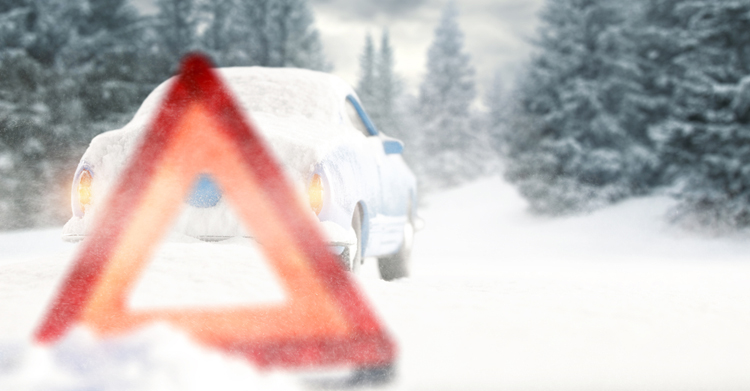
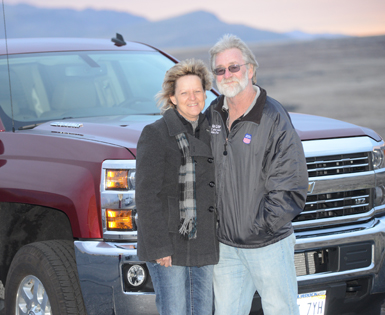
Here are three relatively inexpensive items that will keep you prepared for some of the most common situations you’ll face on the road.

Eight Things You Should Know About Tires
Any reputable tire retailer will have knowledgeable people behind the counter to help you when it’s time to choose new tires. They will look up your car in their database to check the wheel and tire size, then tell you what options they have in stock for your vehicle.
It helps to have some knowledge before you get to that point. You should know the type of tires you need, what you may sacrifice by buying cheaper tires and what you get by going up the price ladder.
- If you’re not sure if your tires need replacing, use a penny. Tires with 2/32″ of tread are legally bald, resulting in severely reduced traction and making the car unsafe to drive. Insert the penny into the tire grooves. If Lincoln’s hair is covered, the amount of tread on the tire is fine. Otherwise, it’s time for new rubber.
- Used tires are a common way to save money, but it’s hard to tell if they were improperly inflated or driven aggressively. These factors can accelerate wear and put you in dangerous situations.
- When choosing a tire, consider the condition of the roads where you drive. If they’re in bad shape, talk to your retailer about tires with taller sidewalls to absorb potholes. Low profile tires look more aggressive, but can make for a harsh ride and be more susceptible to blowouts.
- If you don’t know which tires you need, stick with your car manufacturer’s recommendation. Professional engineers typically choose tires that best match the car’s characteristics, taking into consideration handling, comfort and fuel economy. In most modern cars, this information is located inside the driver’s side doorjamb. Alternatively, you can get it by visiting a tire retailer’s website and entering your car’s year, make and model.
- If you live in an area without snow, a passenger or touring tire should fit your needs. Otherwise, consider a set of winter tires you can use in winter until the snow melts. You may even want a dedicated set of wheels for these tires, so you can easily change them out as the seasons change.
- Getting bigger or wider tires than the manufacturer’s original equipment may have consequences. The increased height may cause the tire to rub against the fender, and changing the shape of the contact patch may cause the car to hydroplane when driving over water.
- How long should tires last? According to Consumer Reports, all-season tires typically last between 40,000 and 100,000 miles. To maximize the life of your tires, keep them properly inflated and rotate them according to the owner’s manual. Doing both will help your tires wear more evenly.
- Low rolling resistance tires are designed to help you save at the pump, requiring less energy to keep them rolling on the road. According to the California Energy Commission, these tires can improve fuel efficiency up to 4.5%.
If you are ready to buy, don't forget your Union Plus savings! Union members can save 10% off Goodyear tires.
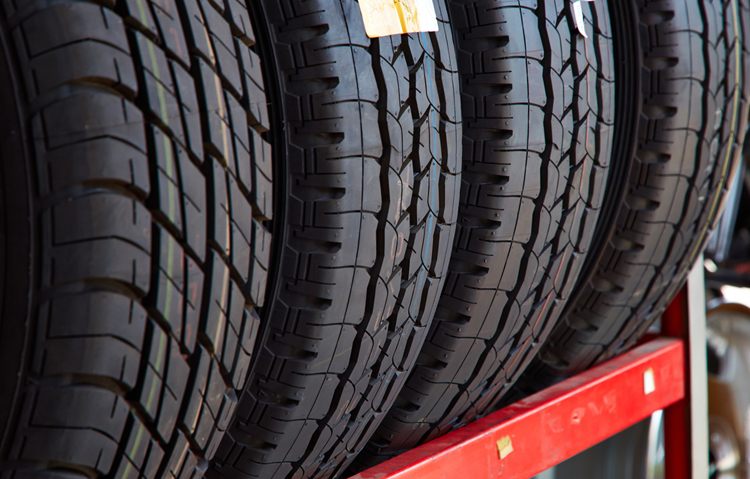
Did you know that union members and their families save an average of $3,279 off MSRP when they buy a car with the Union Plus Auto Buying program?

How to Deal with On-The-Road Emergencies
There are plenty of ingredients for a bad summer road trip in addition to rain and cranky kids. You could be driving along when the engine stalls (the reason for GM's recent recall of 1.6 million cars) or the car accelerates suddenly and unintentionally (the reason for Toyota's recalls in 2009 and 2010) or a tire blows out. Here's what to do in those situations:
Stalled Engine
A car can lose power for many reasons, from running out of gas to having a faulty fuel pump or alternator. (In the recalled GM cars, the problem was an ignition switch that was flimsily made and easy to switch off inadvertently.) If you're driving and the ignition key moves to the accessory position accidentally, try shifting into neutral and restarting the engine.
Then shift back into drive and you're good to go. If the engine won't restart or has stalled for another reason, apply the brakes and steer gradually to the side of the road. You'll lose power steering, so steering will feel heavier, but it will still be possible. Expect the power boost for brakes to disappear after one or two applications, so try to stop as soon as you can, using the emergency brake if necessary.
Sudden Acceleration
Our tests have shown that brakes may not be enough to stop a car with a stuck throttle while traveling at highway speeds. Brake firmly, but don't pump the brakes. And don't turn off the engine, because doing so disables the power assist for your steering and brakes. Shift into neutral. Some modern gear selectors are unconventional enough to cause confusion about where neutral is; if yours is one of them, you can practice sliding your gear lever into neutral while driving in an empty parking lot at low speed.
Don't worry if the engine revs up alarmingly-most modern cars have rev-limiters, and that will keep the engine under control. Steer to a safe location and come to a full stop. Shut off the engine with the transmission still in neutral. Lastly, shift the transmission into park or, with a manual transmission, set the emergency brake.
Blown Tire
Don't stop in the travel lane; take a firm grip on the wheel and limp the car to a safe location. A new wheel is less important than your safety. Do what you can to prevent flats from happening in the first place by keeping all tires, even the spare, properly inflated to the automaker's recommended pressure.
Check air pressure at least monthly-many tire problems result from underinflated tires that overheat-and inspect the sidewalls for bulges or cracks.
For any of those emergencies, once you're safe take a deep breath, then turn on the hazard flashers and summon help.
Visit our guides to summer road trips and car maintenance for more information.
Keep These in the Car
In addition to a basic first-aid kit, have the items below on hand. If applicable, check them periodically to ensure that they're in working order-and be familiar with how each works before you need to use it in an emergency.
- Cell phone and car charger
- Fire extinguisher (multipurpose, dry-chemical compact unit labeled 1A:10B:C or 2A:10B:C)
- Warning light, hazard triangles, or flares
- Jack and lug wrench (if your car lacks run-flat tires)
- Nonflammable foam tire sealant (for minor punctures; not a permanent fix)
- Spare fuses (check owner's manual for correct type and replacement instructions)
- Bright, weatherproof flashlight
- Gloves, hand cleaner, clean rags
- Auto-club card or roadside-assistance number
- Jumper cables or a portable battery booster (eliminates the need for a second vehicle)
- Pen and paper (to leave a note on a windshield or jot down accident info)
- Escape device (for example, Resqme, a key chain with a blade to slice seatbelts and a spike to shatter windows)
Editor's Note: This article also appeared in the July 2014 issue of Consumer Reports magazine.
Copyright© 2006-2016 Consumers Union of U.S., Inc. No reproduction, in whole or part, without written permission.
Union members looking for the complete ratings, as well as expert advice on the highest rated consumer products, make sure to sign up for ConsumerReports.org with your Union Plus 27% online subscription discount.
Copyright© 2006-2016 Consumers Union of U.S., Inc. No reproduction, in whole or part, without written permission.
Learn what to do in a number of sticky situations.
Research Tips for Buying Used Cars
Where to Buy Used Cars
You can buy used cars from dealers, rental car companies, leasing companies, used car companies, private individuals and online. To get the best deal, you’re going to need to do some research — try out these tips!
Buying Used Cars From Dealers and Buyers Guide Rule
If you're considering buying from a dealer, you can find out if there are any unresolved complaints about a dealer on record by calling your local consumer protection agency, state Attorney General and the Better Business Bureau (BBB).
The Federal Trade Commission's (FTC) Used Car Rule requires dealers to post a Buyers Guide in every used car a dealer offers for sale (including trucks). The Used Car Buyers Guide must tell you:
- Whether the car is being sold "as is" or with a warranty
- What percentage of the repair costs a dealer will pay under the car warranty
- That spoken promises are difficult to enforce (get everything in writing!)
- To keep the Used Car Buyers Guide for reference after the sale
- A list of the used car's major mechanical and electrical systems, including some major problems you should look out for; and
- To ask you to have the used car inspected by an independent mechanic before you buy.
Be sure to get the original Used Car Buyers Guide, or a copy, from the dealer. And make sure it reflects any changes you may negotiate in warranty coverage. The Used Car Buyers Guide becomes part of your sales contract.
Buying Used Cars From Individuals
Private sellers do not need to offer a Buyer's Guide for used cars. Used cars sold by individuals are normally sold "as is", but you can request that the car be inspected by your mechanic.
Used cars may be covered by a manufacturer's warranty or a separately purchased service contract. But these may not be transferable. Review the warranty or service contract before you buy any used cars.
Evaluating Used Cars
Before You Buy Used Cars:
- Use an inspection checklist to examine the used car (get from magazines, books, the Internet)
- Test drive the car under varied road conditions - hills, highways, stop-and-go traffic.
- Ask for the used car's maintenance record. If the owner doesn't have it, contact the dealer or service shop where work was done for copies.
- Have used cars inspected by a mechanic you hire.
The secret to buying great used cars? Research before you buy. Learn how!
Six Roadside Safety Tips
Union members can join the Union Plus Motor Club for less than AAA. Membership includes battery boost, flat tire change, lockout service, fuel delivery when you run out of gas, and more. Just $69/year covers your entire household. As a bonus, you'll receive $40 in gas rebate vouchers when you sign up for an initial one year of service. At this rate, membership could easily pay for itself.
Here are five more tips for what to do in a roadside emergency from the auto experts at Consumer Reports — including whether you should wait for help inside or outside your vehicle.
For more consumer advice, use your Union Plus discount to subscribe to ConsumerReports.org online. For just $22/year (26% savings) you'll get unbiased ratings on thousands of lab-tested products(including cars) and advice on making smart purchases on everything from prescription drugs to lawn mowers. Your subscription also supports fellow workers. ConsumerReports.org is published by Consumers Union whose testers and writers are represented by the Communications Workers of America (CWA).
This first tip is a money-saver.
Car Repair: Easy Ways to get Good Value for Your Money
When it comes to auto repair many of us are aware of some of the trade-offs between convenience, security and price, but we don't know enough to feel comfortable with our decisions and we realize we're not really in control. There's always some inconvenience and some risk. The trends are favorable, however, and there are easy ways to improve the odds of getting good value for your money.
Reliability at a Price
Reliability is just one factor you consider in buying a car and it's just one factor manufacturers consider in designing one. Cars are getting more reliable even as they get more complex, thanks to technical advances, but they also cost more--more to buy and more to maintain, even though less service is required. Either technicians need more equipment and more training for diagnosis and repair, or expensive modular units must be replaced. If something unexpected needs attention, getting at it can be time-consuming. Styling and performance needs often compromise ease of repair. Replacing a headlight isn't always easy these days. In many ways automobiles are becoming like the small household appliances that say "Attention: Do Not Disassemble. No user-serviceable parts inside."
A Changing Industry
These changes to cars have changed and shrunk the auto repair industry. Gas stations are more likely to sell bread than tune-ups. Dealers are getting more of the business. (Longer warranties have helped them, too.) Independent shops have had to specialize. Hourly labor rates have climbed dramatically. Franchises have acquired new pieces of the market: mufflers, tires, transmissions, tune-ups, oil changes, etc. With more choices, more specialization and less frequent service needs, we are less apt to know a repair facility through long personal experience. Without that experience we must rely on other people's opinions, appearances, ads, guarantees and legal protections.
Trade-Offs
Price, convenience, features, reputation--the same factors are important in choosing a repair facility as any other service or product. No one else will balance these factors quite the same way you do, but other people's opinions are important. Ask around, look around. Here are some general tendencies:
- Dealerships. Highest prices, best facilities. Often located far from employment centers. May offer shuttle services but seldom loaner cars. Best access to parts and latest factory service bulletins. Specialization--service manager, team leader, service technician, cashier--can make it difficult to relay the symptoms of a problem to the person doing the work or to get a complaint resolved, or it can help everyone do more of what he does best. Most people use a dealer while their car is under warranty, but it is not required.
- Franchises. Often emphasize convenience and speed. Always worth checking for price when you need what they specialize in. Beware of being sold unnecessary parts or service. Help tends to be lower paid and trained in much narrower areas than traditional auto mechanics.
- Independent Shops. The best and the worst. Like new restaurants that get "discovered," a small shop started by a master mechanic may have growing pains once the clientele grows and the mechanic must act as mostly a manager. Avoid places that "specialize in all cars foreign and domestic."
- Service Stations. The ones that do a lot of repair work now usually don't sell a lot of gasoline. Often the cheapest and most convenient for routine services: oil change, tire rotation, coolant, belts and hoses. Be sure they can get the right parts on time at a fair price before committing for major work.
Legal Protection
If you shop carefully and match your needs to the repair facility, problems should be rare. The nature of the business makes some disputes inevitable, however, and some places are dishonest. Here are some legal rights you should be aware of:
- Written Estimate. Most states require written estimates and forbid charging much more than the estimate without your further authorization. If diagnosis requires tearing down your car's engine or transmission, be sure you are clear what will happen and what it will cost if you decide not to go ahead with repairs. Never sign a blank work order.
- Replaced Parts. You should look at or take back your replaced parts. Most states require that they be offered to you. Have a mechanic elsewhere check them if you suspect the part's didn't come off your car or didn't need replacing.
- Warranties. Take the car back if the problem isn't fixed. Everybody hates "comebacks," but they're part of the business.
- Mechanic's Lien. With rare exceptions, you'll have to pay what the repair shop says you owe to get your car back. If there's a dispute, it's usually necessary to pay the whole amount and then sue in small claims court for a refund. It may seem unfair but it sure helps mechanics get paid. Call your lawyer for advice.
Source: National Resource Center for Consumers of Legal Services.
There's always some inconvenience and some risk in getting your car repaired — learn how to improve your odds of getting a good value.